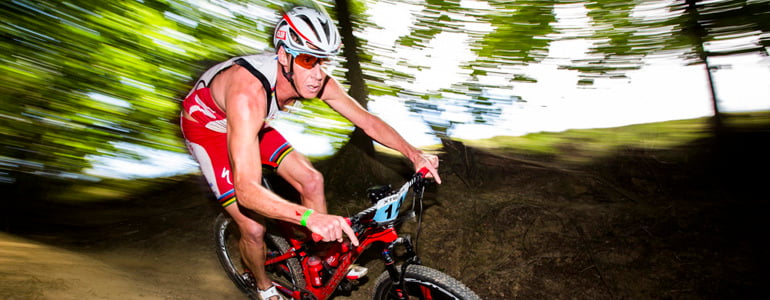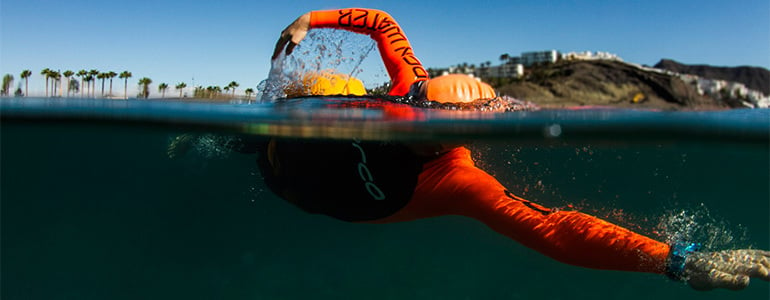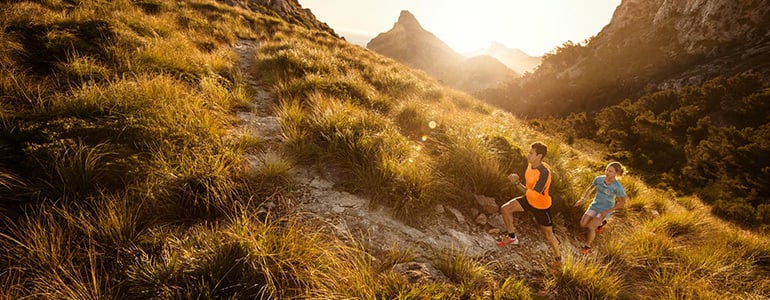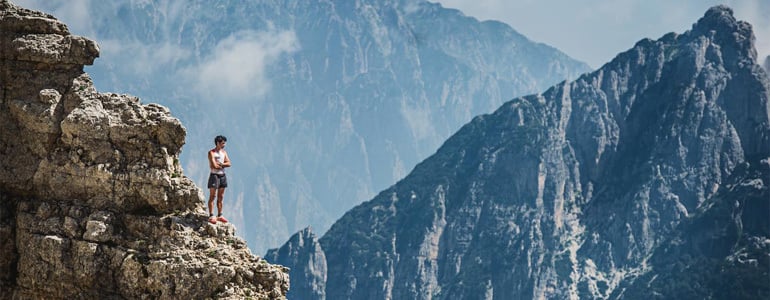

Suunto Blog

Divers retrieve a piece of WWII history
Suunto ambassador and underwater explorer Jill Heinerth documented a sensitive dive mission to recover an important piece of history.
A dive team successfully retrieved the sextant from a WWII wreck and have delivered it to a Newfoundland museum for posterity.
Diver Luc Michel discovered the sextant last year.
Suunto ambassador Jill Heinerth documented the dive and says it was a “huge privilege” being part of the team.
“The fear was that if left in place, in the open, underwater, [the sextant] would disappear into somebody's private collection which is not just illegal, but also a loss of cultural history,” Jill says. “Sharing the history and ensuring the safety of this important artifact for the museum was a huge privilege.”
Meet Jill face-to-face in episode 7 of the #SuuntoAdventure video series
The recovered sextant is being restored before being displayed at Newfoundland museum.
The sextant belonged to the SS Rose Castle, a steam merchant ship, that a German U-Boat sank during WWII while it was anchored at Bell Island, off the coast of Newfoundland. Iron ore mines on Bell Island supplied Cape Breton's steel mills, which accounted for one-third of Canada's steel production. Seeking to disrupt production, the German U-Boat entered the harbor at 3am one morning in September 1942 and sank the SS Castle Rose with two torpedoes before sinking French vessel PLM 27 and escaping into the darkness. The Castle Rose took 28 crewmembers down with her, five who were Newfoundlanders.
“We dive with great reverence, understanding that this site is essentially a war grave,” Jill says. “The many men who died were never expecting to be targets of the war and within site of some of their homes.”
The SS Lord Strathcona was also sunk in 1942. Above, divers explore its wreck.
Diver Luc Michel, from St. Pierre et Miquelon of Newfoundland, located the sextant last year. After restoration, the sextant will be displayed at The Rooms, a Newfoundland cultural center and museum.
Click here to read about Jill's journey as an underwater explorer.

Triathlon transition tips from the Caveman
Legendary South African triathlete Conrad Stotlz, known fondly as the Caveman due to his large stature and rough and rugged ways, knows well how to dominate a triathalon.
He's a four time XTERRA Triathlon World Champion and a three time ITU Cross Triathlon World Champion and mountain biking is his strongest discipline.
In this video he shares his tips to transition from swimming to mountain biking. The Caveman shows us how to do it like a pro.
Meet Conrad face-to-face in episode 5 of the #SuuntoAdventure video series.
Click here to read about how Conrad earned the nickname Caveman

8 tips for open water swimming
Swedish triathlete Åsa Lundström learned to swim later in life, but thanks to good training she improved rapidly and became a champion. Below she shares eight tips for becoming a better swimmer in open water races.
Medical student Åsa Lundström is a two time Ironman winner and Swedish long distance champion. © Petri Kovalainen
Open water swimming is a lot more challenging than swimming in a pool. Wind, waves, currents, navigation, others swimmers splashing around you make having a strong technique and mindset essential.
1. Mind power
Open water swimming races can be mentally challenging. You can swallow water, have trouble navigating, get water in your goggles and knocked around by other swimmers. It’s important to stay focused and not get lost in negative thoughts. Try to develop tools to keep a positive mindset. For example, repeating your own positive mantra can be helpful.
2. Practice swim starts
If you lose your focus at the start of a race because someone is hitting you every second or two it can affect you for the whole race. But if you're familiar with it, then it won't affect you as much. To work on this, practice swim starts in a pool with a group of training friends.
3. Balance is key
Strong swimmers are much more stable in rough water. That's why weaker swimmers should work on their balance and stability by doing pool drills. Side kicking and polo swimming drills are good to start with. Core strength training exercises are also good.
Click here to find out how Åsa went from non-swimmer to champion triathlete
Doing drills with buddies helps to simulate race conditions. Petri Kovalainen
4. Follow the feet
During a swimming race, having someone immediately behind you can destroy your rhythm. It’s good to simulate this experience in a pool so you get used to it. A good drill for this is swimming in a row with three training friends, each on the feet of the other. Try being in each position – front, middle, back.
5. Know the conditions
You don’t want any surprises on race day. Make sure you know you can handle the conditions. If the race is in cold water, then you should practice in cold water. If the race is in open water, you should train in open water.
6. High frequency
To help maintain your technique in challenging conditions, try to have a high frequency arm turnover, higher than you normally would have in a pool. It makes you stronger, less impacted by people hitting you and helps you to slice through waves.
Learning to breath on both sides is important. © Petri Kovalainen
7. Find a landmark
When you swim in open water, it’s a good idea to navigate for a landmark, not something in the water. I try to find a landmark above the buoy so I don’t have to lift my head as much. The higher the landmark, the easier it is to navigate and not miss your target.
8. Breath on both sides
It’s a good idea to practice breathing on both sides. If you’re in a race and you have someone close to your right side, it might be better to breathe on your left side. Being able to breath on either side is also useful if waves are coming from one direction, or if you are trying to navigate towards something.
Lead image: © Orca/Gines Diaz

Have your running form analyzed now!
Carmichael Training System coaches Jason Koop and Nick White gave three more runners useful tips to help them improve their running technique.
One week remains for runners to have their technique analyzed for free and to go in the draw to win one of six Suunto Ambit3 Run watches.
Click here to find out how to get involved in the How do I run? contest
As part of the contest, coaches Koop and Nick have so far analyzed clips shared by eight runners, offering ways they can improve their technique or become faster. Read the advice they previously gave to five runners.A good running form comes down to some basic fundamentals and after coaching amateur and elite athletes for most of their lives, Koop and Nick can easily spot ways runners can improve. So, now's the time to improve your running technhique!
Click here to read eight running tips from the coaches
Suunto’s has also released new performance features for Ambit3 watches, including a function that analyzes your heart rate and speed while you run, and two new funcions that help to determine your level of recovery. The new features were developed with Firstbeat Technologies, Suunto’s long term partner in sports sciences. Read more about the new features here.
Feedback from the coaches
#suuntorun how is my running technique?
A video posted by Eden Paz (@tivoninja) on Jul 2, 2015 at 10:19am PDT
Feedback from Nick: Your running technique does look very good! Especially your mid foot strike and stride length. The only thing that I'd recommend working on, is WHERE your feet are contacting the ground. Your initial ground contact is slightly out in front of your hips and center of mass. Ideally you can bring that contact point backwards so that it is directly under your hips you'll really increase your running efficiency. That may FEEL like shortening your stride at first, but ultimately it will be beneficial to your speed!
Hi Suunto, can you please analyze my running style? Thnx ! #suuntorun #suunto #running #hardlopen #hopingtowinthe #ambit3
A video posted by @dlimborgh on Jul 5, 2015 at 9:27am PDT
Feedback from Koop: You have a nice and relaxed upper body and that leads to very good form overall. Your footstrike is slightly in front on your hips, leading to some unnecessary braking forces. If you focus on having this footstrike directly under your hips, this will lead to a more efficient stride.
@suunto #SuuntoRun
A video posted by Steve Skinner (@stephenskinner6) on Jul 7, 2015 at 1:49am PDT
Feedback from Nick: You are running pretty fast here! If you focus on having your head up, directly over your shoulders and staring 10-15 feet in front of you, this will straighten out your torso and upper body.

Dynamic duo crush mountain race records
Suunto ambassadors and couple Kilian Jornet and Emelie Forberg share life training, racing and living in the mountains. Now they share new records at the iconic Alaskan Mount Marathon race.
It’s one of the oldest mountain running races in the world and this year the Mount Marathon Race celebrated it’s 88th race and 100 years since it first began in 1915. Spanish and Swedish runners and couple Kilian Jornet and Emelie Forsberg were there to race and celebrate the historic event. They both won and crushed the men's and women’s records.
“It has been a new experience and I am very satisfied,” Kilian says. “This race is amazing, not only because it’s very technical but also because of the atmosphere surrounding it.”
Click here to find out how to have your running form analyzed by professional coaches for free!
© IrunFar
Kilian and Emelie were both inspired by the iconic stature of the race, it’s famous cheering crowds and the vast Alaskan wilderness. Held every year on US Independence Day (July 4) in Seward Alaska, the 5 km race route starts in the town and ascends 921 m up the steep flanks of Mount Marathon to its 1257 m summit. Runners then make a fast descent back to the town. The mountain is so steep in places runners must climb, scramble on all fours, and contend with a slippery, rocky surface as they make their way up. Both Emelie and Kilian met stiff competition during the ascent of their races. The women’s race was first and Emelie and young Alaskan running phenomenon Allie Ostrander were neck-and-neck until after the half way mark, when Emelie broke away, gaining a 50 second lead by the time she reached the summit. Once she took the lead, Emelie was unchallenged to the finish line, breaking the 25-year-old women’s record by 2m82s.
“I was really not thinking I could do such a good time,” she says. I know I have been training well, but I have also been doing some vertical kilometers and didn’t feel rested enough. So this was super cool."
Click here to read Emelie's trail running tips
Kilian also fought hard with other runners all the way to the summit, but once the descent began his downhill technical skills meant he shot ahead, leaving the competition behind him. He slowed down in the final stretch, giving high fives with fans, spinning for the cameras and still managing to break the previous men’s record by 1m07s.
They are both now preparing for their next races of the season.
Face to Face with Jill Heinerth, #SuuntoAdventure Video Series Episode 7
In this seventh installment of the #SuuntoAdventure Video Series you will meet inspiring underwater explorer Jill Heinerth.
“You can’t always say how to solve a really, really big problem, but you usually know what the next best step is,” the optimistic Canadian says. Read more about Jill here.
Face to Face with Jill Heinerth, #SuuntoAdventure Video Series Episode 7
Watch also the other episodes in the series:
Face to Face with Emelie Forsberg – #SuuntoAdventure Video Series, Episode 1
Face to Face with Greg Hill – #SuuntoAdventure Video Series, Episode 2
Face to Face with Kilian Jornet – #SuuntoAdventure Video Series, Episode 3
Face to Face with William Trubridge – #SuuntoAdventure Video Series, Episode 4
Face to Face with Conrad Stoltz – #SuuntoAdventure Video Series, Episode 5
Face to Face with Ueli Steck – #SuuntoAdventure Video Series, Episode 6














































































